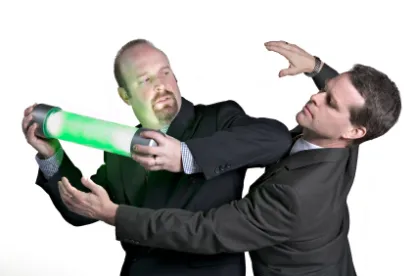The US Court of Appeals for the Federal Circuit affirmed a Patent Trial and Appeal Board (PTAB) decision, rendered in the context of a patent interference contest, resolving priority of invention to a hepatitis C treatment on the basis of the senior party’s reliance on a priority document that was found to be non-enabling of the count. Storer et al. v. Clark, Case No. 15-1802 (Fed. Cir., June 21, 2017) (Newman, J).
Storer and his co-inventors were issued a patent, the effective filing date of which was based on a non-provisional patent application filed on June 27, 2003, but that also claimed priority to a provisional application filed June 28, 2002. Storer’s patent was assigned to Idenix Pharmaceuticals. Another inventor, Clark, filed a patent application on September 12, 2007, with a claim of priority to a provisional application filed on May 30, 2003. Storer and Clark both claimed a treatment of hepatitis C using modified nucleoside compounds having a fluorine substituent in the 2´ position. Because the application for Storer’s patent and Clark’s pending application were filed before the effective date of the America Invents Act, the first-to-invent rule applies, and the US Patent and Trademark Office declared an interference to determine which inventor was entitled to priority.
Storer was initially declared the senior party based on the June 28, 2002, provisional application filing date. Clark moved to deny Storer the priority date of the provisional application and to invalidate Storer’s claims, arguing that the provisional application did not enable compounds having a 2´F (down) substituent. In response, Storer argued that these compounds were generically disclosed in his provisional application and were readily obtained based on the disclosure in the provisional application and the prior art.
The PTAB found that Storer was not entitled to the 2002 provisional application filing date and awarded priority to Clark. The PTAB determined that the claimed compounds having a 2´F (down) substituent were not enabled in Storer’s provisional application because undue experimentation would be required to produce the claimed stereochemical structure. In reaching its conclusion, the PTAB analyzed the so-called Wands factors—i.e., the factual considerations used to determine whether undue experimentation is required. The PTAB concluded that undue experimentation was required to produce the claimed compound because, among other things, (1) synthesis of the claimed compound required at least two years of high-priority experimentation by multiple experts; (2) the provisional application provided little guidance and no examples on synthesizing the claimed compound; (3) fluoridation of tertiary alcohols to produce a 2´ down tertiary fluorine was not known in the prior art; (4) the level of skill in the art was highly sophisticated; and (5) the relevant art was highly unpredictable. Storer appealed.
On appeal, Storer argued that the 2002 provisional application disclosed “the precise chemical structure of the target compound” and that prior art known as Matsuda Compound 17 contains “a well-known precursor compound that is only one step away from the target compound.” Based on these disclosures, Storer argued that the Matsuda 17 Compound is readily converted into the target compound by known methods to produce the claimed stereochemistry.
The Federal Circuit disagreed, finding that the Storer provisional application did not describe synthesis of the 2´F (down) target compounds. Instead, the Storer provisional application disclosed two general approaches to synthesizing, neither of which taught or suggested conversion of any precursor into the 2´F (down), and even assuming that a skilled artisan would have started with the Matsuda Compound 17, there was no evidence that the critical stereochemical result would have predictably ensued. Indeed, to the contrary, there was evidence that Storer and his team had difficulty and failures synthesizing the target compound, and the chemistry was unpredictable. Given the entire record, the Court found that the PTAB’s decision to award priority to Clark was supported by substantial evidence




 />i
/>i
